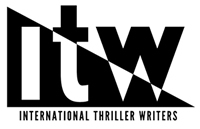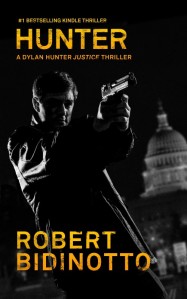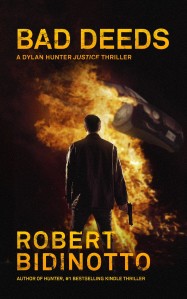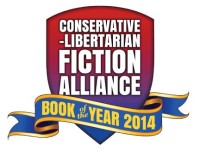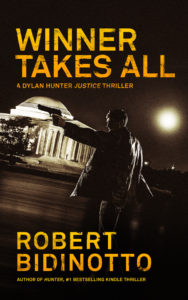From time to time, readers ask how and when I first dreamed up Dylan Hunter, what my original story ideas were, and how I developed the character and series. Luckily, I’m an obsessive note-taker, and I’ve compiled detailed, dated records about all this stuff.
So, here goes . . .
I first envisioned a sketchy version of Dylan Hunter way back in late June 2004. In the wake of the 9/11 terrorism, it’s not surprising that my initial conception of him was inspired by the sort of counterterrorism tales and heroes conjured by authors like Vince Flynn and Brad Thor. At that time, I imagined that Dylan was to be a counterterrorism hero, too.
Reviewing my handwritten notes from that period, I was surprised to see how much of WINNER TAKES ALL — the third novel in the published series — grew from ideas for what I then conceived would be the first Hunter thriller, titled CRUSADER. That planned story, in which terrorism played a central role, grew along with the Hunter character.
I settled on the surname “Hunter” almost immediately, but in 2004, “Dylan” was only one of a host of first names I considered. I kept matching the “sounds” of various first names to surnames, never quite happy with the combinations. (For a while that first year, he was “Reno Lee Hunter.”) While my physical image of the character evolved over time, I described his background, personality, skills, and combative history with the Russians pretty much as they eventually turned out in the published series.
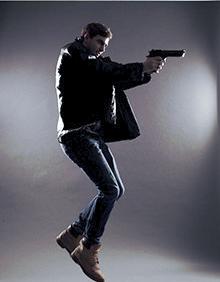 After my initial flurry of inspiration and note-taking in 2004, I got sidetracked by Life. It wasn’t until March 2008 that I revisited the character and the CRUSADER storyline. On April 4 of that year, I finally settled on his full name, Dylan Lee Hunter, and began to refine and fill in his biography. By late May I also settled on his physical appearance. I spent the rest of 2008 and 2009 further developing the character. My copious notes include many photos of a Hollywood actor whose appearance evoked my image of him; a fully developed timeline of his early life; and extensive essays about his background, psychology, and career in the CIA.
After my initial flurry of inspiration and note-taking in 2004, I got sidetracked by Life. It wasn’t until March 2008 that I revisited the character and the CRUSADER storyline. On April 4 of that year, I finally settled on his full name, Dylan Lee Hunter, and began to refine and fill in his biography. By late May I also settled on his physical appearance. I spent the rest of 2008 and 2009 further developing the character. My copious notes include many photos of a Hollywood actor whose appearance evoked my image of him; a fully developed timeline of his early life; and extensive essays about his background, psychology, and career in the CIA.
It was only in mid-November 2009 that I decided CRUSADER wasn’t the right story to launch the Hunter character. It presented him “currently,” without his backstory and history, which would be crucial for readers to understand him. I realized that if I published CRUSADER first, either I’d have to interrupt the plot with an extensive flashback, or I’d eventually have to write a prequel novel as an “origin” story for the character. It made more sense to start the series at its chronological beginning, instead. So I set CRUSADER aside and dove into plotting HUNTER.
Simultaneously, I also decided to abandon counterterrorism as Dylan’s mission. By then, the 9/11 atrocity was eight years past, and many other thriller authors (some with special ops credentials) had already written great counterterrorism series. Besides, that theme narrowed the subject matter my books could address. So, I changed Dylan’s crusade to a subject in which I had previously acquired knowledge and experience, as a journalist. He would keep his CIA background and skill set, but now he would take on corruption in the criminal justice system, as a vigilante.
Interestingly, Annie Woods was a latecomer to my planning. Early on, I had no intention to inject romance into the Hunter stories — indeed, the idea of doing that frightened me. As a male, novice author, I had no confidence that I could present a romance that readers wouldn’t laugh or wince at. I mentioned Annie only as a minor secondary character, in a single brief paragraph of my December 2008 CRUSADER notes. It wasn’t until mid-November 2009, when I abandoned CRUSADER and started to work in earnest on HUNTER, that I began to flesh out her critical, central role in the series. Why? Because I felt that I needed to torment my hero with some intensely personal emotional conflict, to add depth to his story. What better way to do that than through the tribulations of a tumultuous romance? I realized that as his lover, Annie also could be the perfect foil for my hero, enriching, complicating, and threatening his life in profound ways.
I’d say that decision worked out pretty well.
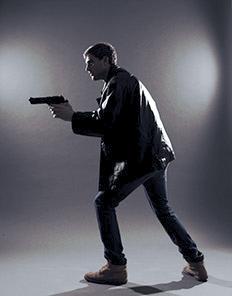 At that time I was writing it, I didn’t necessarily think of HUNTER as a series opener: I just wanted to see if I could actually write a novel. So I developed that story as a stand-alone thriller. Only after it was published and became wildly successful did I feel confident I could launch a series based on the character. I then conceived and wrote the sequel, BAD DEEDS, as a chronological continuation of the HUNTER storyline and characters.
At that time I was writing it, I didn’t necessarily think of HUNTER as a series opener: I just wanted to see if I could actually write a novel. So I developed that story as a stand-alone thriller. Only after it was published and became wildly successful did I feel confident I could launch a series based on the character. I then conceived and wrote the sequel, BAD DEEDS, as a chronological continuation of the HUNTER storyline and characters.
Writing the second novel wasn’t easy. I felt an enormous weight of responsibility after HUNTER: I didn’t want to let down fans of that book. I knew that after a big, successful first novel, the sequel frequently disappoints fans. In the publishing industry, they call it “the sophomore slump.” I felt I had to prove to myself, and to fans of HUNTER, that I didn’t have only one good story in me. That meant this new one had to be as good or better than the first.
One big challenge was figuring out what to do with the Dylan/Annie relationship. To keep their romantic tension going, I needed some new kind of conflict that would tug them apart. Also, I wanted to answer a few critics of HUNTER who saw Annie as too “weak” — a mere damsel in distress. I had to make clear she was Dylan’s equal in courage and toughness.
Dylan also had to evolve beyond the inner conflicts he wrestled with in the first novel. In HUNTER, he comes to terms with his new identity. In BAD DEEDS, he comes to terms with his basic nature as a protective “sheepdog” in a world of predatory wolves and vulnerable sheep.
Even before I finished writing BAD DEEDS, I was mulling ideas for the third book in the series. I revisited my old CRUSADER notes and found a lot of fertile material. I planted some of it in BAD DEEDS, as seeds to be harvested in the next novel. When that second book was published, I culled many story ideas and characters from the CRUSADER notes, reworked and expanded its plot, changed its theme, and renamed it WINNER TAKES ALL.
For example, you may be interested to learn that the very first scene I ever drafted in the entire Dylan Hunter series was the traumatic terrorist bombing that now appears at the midpoint of WINNER TAKES ALL; it was drawn directly from my 2004 notes for CRUSADER.
I also borrowed many characters from that trove of material. The main villain in CRUSADER was to be Avery Trammel; his motives, background, and activities were very similar to the way he turns out in BAD DEEDS and WINNER TAKES ALL. I also wrote that Trammel would “need a thuggish hitman, an American (probably with military training and a criminal record)” — a “psychopath” who “rides herd on the local terror cell.” That character, then named “Lash,” became assassin-for-hire Ray Lasher. I planted his name as a mere passing reference in HUNTER; his ghostly, intermittent presence haunts BAD DEEDS; and his role expands to become, with Trammel, the co-villain of WINNER TAKES ALL.
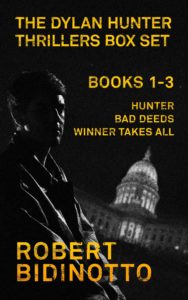 I had developed Julia Haight, Trammel’s actress wife, in those early notes, too, though I presented her far less sympathetically than how she evolved in WINNER TAKES ALL. The CRUSADER notes also sketched profiles for Hunter’s ongoing series sidekick Freddie “Wonk” Diffendorfer, as well as for other WINNER TAKES ALL characters: investigative journalist Arnie Wasserman, presidential candidate Carl Spencer, nonprofit villains Wallace Rouse and Paul Ratzenberger, and nonprofit good guy Dennis Hatcher.
I had developed Julia Haight, Trammel’s actress wife, in those early notes, too, though I presented her far less sympathetically than how she evolved in WINNER TAKES ALL. The CRUSADER notes also sketched profiles for Hunter’s ongoing series sidekick Freddie “Wonk” Diffendorfer, as well as for other WINNER TAKES ALL characters: investigative journalist Arnie Wasserman, presidential candidate Carl Spencer, nonprofit villains Wallace Rouse and Paul Ratzenberger, and nonprofit good guy Dennis Hatcher.
With the publication of WINNER TAKES ALL, I found that I had completed an unplanned opening trilogy for the Dylan Hunter series. The trilogy establishes the major characters, their clashing values and goals, and the intricately developed Story World in which they live. It will forever serve as the essential foundation for all other series tales, going forward.
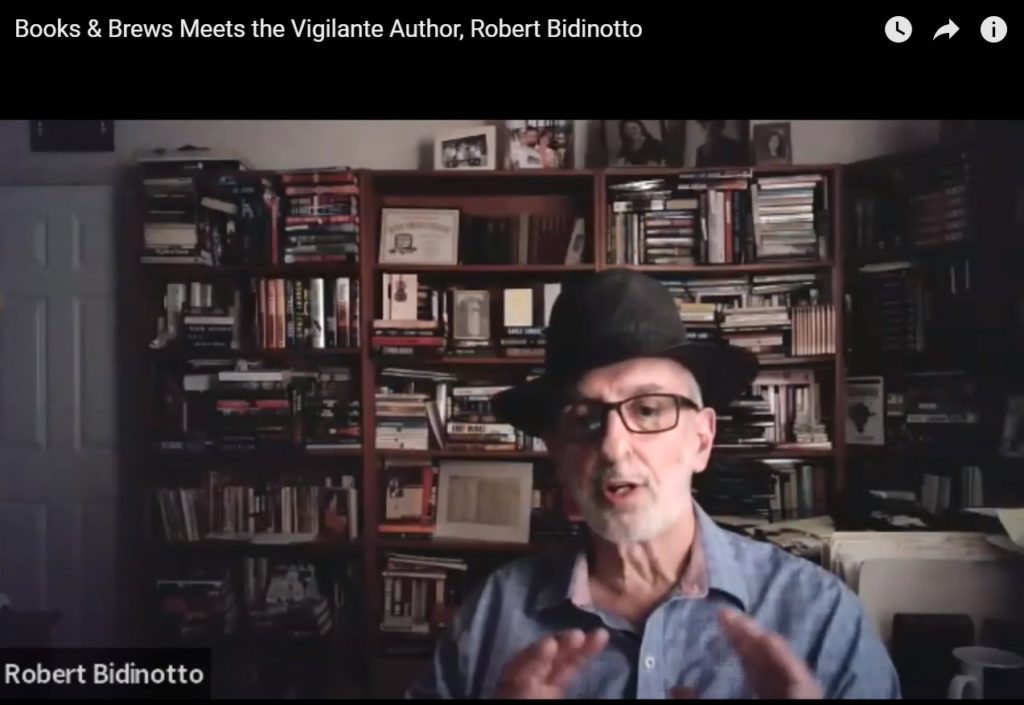



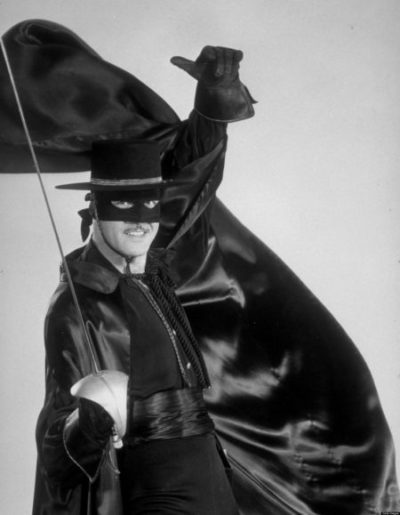
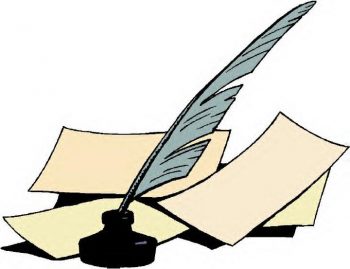 An author can start with something concrete and specific, such as an image of some character. Or of some setting. Or a line of dialogue. Or a news story. Or a conflict of some sort. Or he can start with an abstract theme. In eventually completing a story, the author will get around to incorporating a host of elements, both abstract and concrete — but mostly concretes that, taken together, will ideally add up to some theme, premise, “message,” or “moral.” But he can start the brainstorming process with any germinal seed — and then just keep asking himself questions about that story seed. Answering those questions will start fleshing out the tale.
An author can start with something concrete and specific, such as an image of some character. Or of some setting. Or a line of dialogue. Or a news story. Or a conflict of some sort. Or he can start with an abstract theme. In eventually completing a story, the author will get around to incorporating a host of elements, both abstract and concrete — but mostly concretes that, taken together, will ideally add up to some theme, premise, “message,” or “moral.” But he can start the brainstorming process with any germinal seed — and then just keep asking himself questions about that story seed. Answering those questions will start fleshing out the tale.

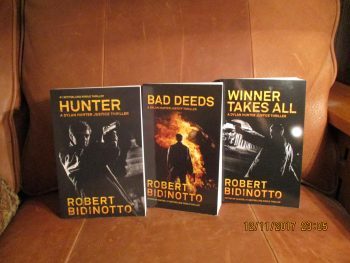
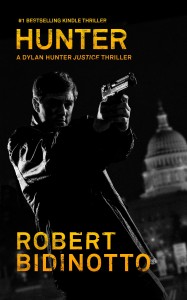



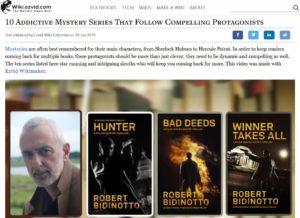

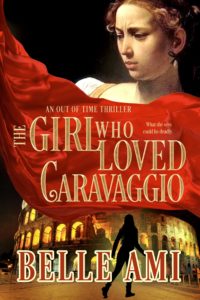
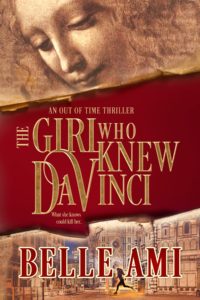
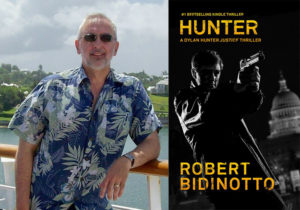
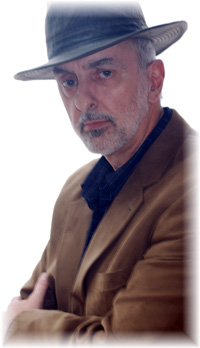 Photo (c) by Debbie Scott
Photo (c) by Debbie Scott
